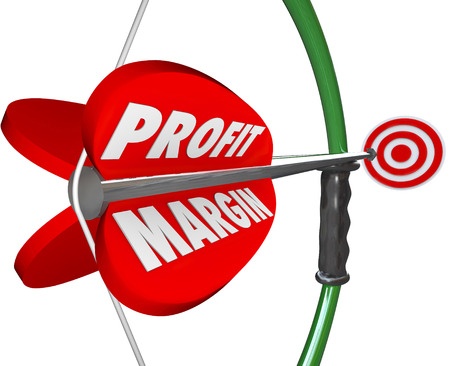Net Profit is King!
Not Cashflow
Economic researchers claim that 80% of businesses go out of business in the first 5 years and 50% in the first year. These percentages are staggeringly high. Most business owners think that cash flow is king, but they forget about net margins being equally important.
When you’re running a business your aim is to be successful in your industry and make a profit. If you’re employing staff you want to be able to pay their wages and cover all your overheads and business expenses, including your own salary. You’ll need to make enough sales to cover all of that and more, if you want to put something aside for your nest egg, or have capital to re-invest into your business to help it grow.
That’s why I say, “Net Profit is King!”
Over the years, we’ve seen a lot of different kinds of small businesses fail not just due to lack of cash flow, but also because their net profit margins were too low. So here’s the thing: in our experience, 90% of all businesses are operating on less than 10% of net profit margin!
What does this mean in reality?
For example, if you made a $1,000 sale and your business’s net profit margin was 10%, what that means is every cost of your business has to come out of the sale and that means on average, out of the $1,000 received in the bank account, $900 of it goes out to pay all the overheads, costs of sale etc. so there is only 10% of the income received still in the bank account.
Knowing if you’ve got a healthy net profit margin is often one of the biggest challenges, and so many businesses are not failing due to lack of sales or customers… they fail because their net profit margin is too low.
The sad part is that often due to inadequate financial administration, ie having a budget and cash flow forecast and knowing your 5 critical numbers, most business owners don’t even know about their impending demise until it is too late.
If you’re curious to find out how high your net profit margin should be for the size of your business, you can look at some benchmark figures for your industry that are readily available. Visit the ANZ’s Small Business Tools and take a look at the different “Financial Ratio Profiles”, to see how your own business measures up.
To give you an idea, for a business with $700,000 of total income, the generally accepted view is that your net margin should be at 15% minimum, although this figure could vary depending on the industry.
If you want to be successful in business, then your net profit margin needs to be your number one focus! To help you understand your business financials, here’s a quick summary of the 5 most critical numbers and how they are calculated.
-
Gross Profit in $ / Gross Margin %
Your Gross Margin in $ is calculated by deducting the Cost of Goods and Direct Costs ($) from Sales ($).
-
Markup in %
Most people understand that Markup in business is what defines the Gross Profit margin further. Markup is calculated by deducting Cost of Goods from Sales, and then calculating what percentage the resulting figure is in relation to total sales.
-
Net Profit $ / Net Margin %
The Net Profit figure in dollars is worked out by deducting the costs and overheads from the Gross Profit. It correlates to the Net Margin figure in percent. Net Margin figures are used in benchmarking business success.
-
Budget
A budget will help you better manage your cash flow needs. With a solid budget, you could also walk into any bank and talk to them about a business loan, if you needed one.
-
Breakeven
The breakeven figure identifies the number of sales to be made before all business expenses have been met and profit begins (before tax). It is the spot where your business neither makes a profit nor a loss. Believe me, profit and cash flow are not the same things. You can still go broke whilst making a healthy gross profit if you don’t have the cash flow you need to meet your commitments. Your net profit margin is, therefore, one of the most reliable factors for your business success.
Go through your financials, get on top of your numbers and firmly take control of your business’ destiny. Talk to your accountant, if you need some help to work out strategies to increase your net profit and net margins. It might be easier than you think.
Please Note: Many of the comments in this article are general in nature and anyone intending to apply the information to practical circumstances should seek professional advice to independently verify their interpretation and the information’s applicability to their particular circumstances. Copyright © 2017 Robert Bauman.

